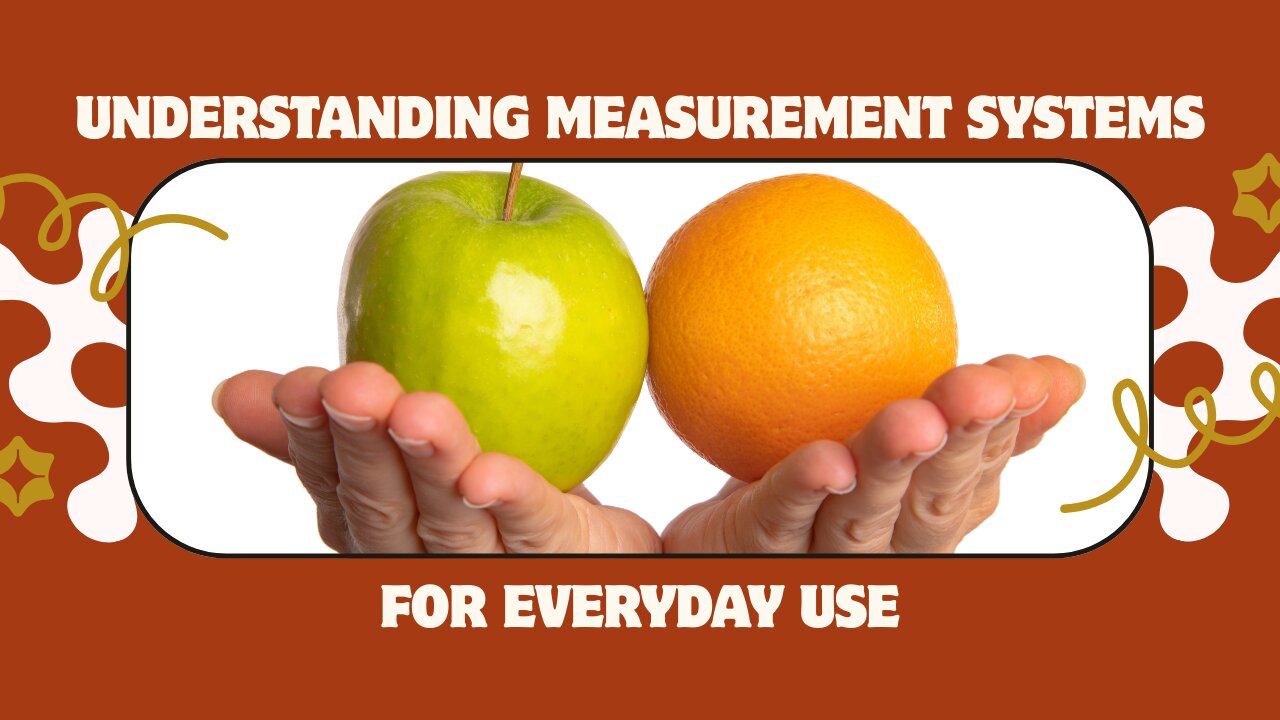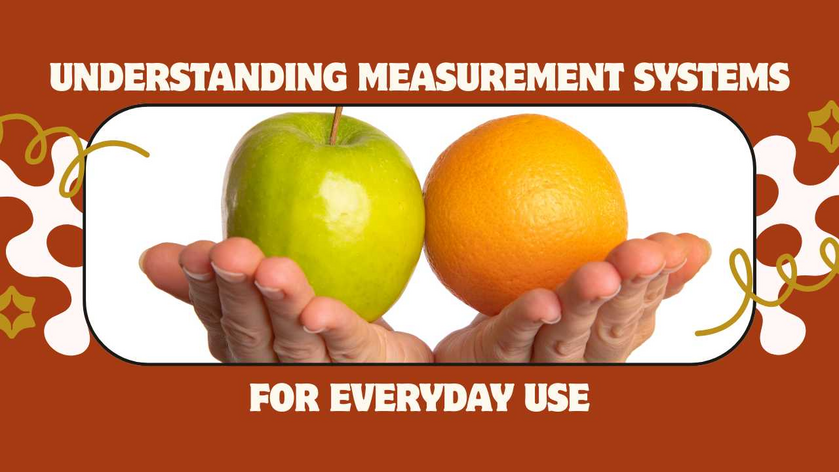In the fiery debate on American patriotism and exceptionalism, American patriots have missed one vital element – measurement. Most of those who talk about measurement, lament that ours is one of the few countries left that still uses ancient units of measurement that do not relate to one other in “clean,” powers-of-ten ratios. In short, only in the laboratory (and not always at the drugstore) does any American use “the metric system.” Nor is this for lack of effort by its proponents to cram it down Americans’ throats. But to make any coherent defense of our American system of measurement (other than “we grew up with it, so why change”, one must understand where those ancient units came from. Once one does, one realizes that those ancient units are the only units that relate reliably to regular human experience. And that alone makes them worth keeping.
Measurement began with human anatomy and physiology
Any system of measurement requires a standard so that everyone understands what a given unit means. When human beings first started measuring things, they used themselves as the standard of measurement. Or if that didn’t make sense, they used something in common human experience, like water.
The United States Customary System of Units uses most of those ancient units of measurement, plus some not-so-ancient. In fact many of those units are as ancient as the Roman Empire, or more ancient than that. Admittedly, humans have stopped using at least two: the cubit (from elbow to middle fingertip) and the span (from thumb to little finger on a stretched-out hand). But the inch (breadth of the nose), foot (length of the foot), and yard (from nose to fingertip of the outstretched hand) are still part of the U.S. Customary system. So is the fathom, or length of an anchor rode between two outstretched hands – six feet.
This system contains many other units of length, most of which have fallen out of use. (Examples: link, rod, chain, furlong.) But we still use the mile, which is a thousand paces on the march. And some might have heard of the league, though they never learned what it meant. A league is an hour’s march in full infantry kit. The standard speed on the march is three miles per hour, so one league is three miles.
The beauty of these units
All these units of length have one thing in common. They relate to the human experience. That makes them absurdly easy to use. Want to know how long is the boundary between your yard and your neighbor’s? Step it off. If you’re in a boat and want to know how deep the water is, drop a lead weight attached to a length of rope, then pull it in by stretching it between your arms. The number of times you do that, is the number of fathoms.
Obviously one doesn’t convert from one length unit to another by multiplying by a power of ten. But one doesn’t have to. All that matters is using the unit appropriate to the activity.
Units of area have a similar derivation, as do the units of liquid capacity. The units of weight initially derived from the units of liquid capacity – one pint of water weighed one pound. Sadly, that’s no longer true – different “prototypes” changed sizes too often. Also, in the ancient world, weight and mass meant the same. Not until Sir Isaac Newton would anyone even think of going to a place where a one-pound mass weighed less. Or, for that matter, more.
Temperature had a similar connection to human experience. Daniel Gabriel Fahrenheit famously defined zero as the freezing point of saturated ammonium chloride brine. His high point was 96 degrees – his estimate of normal body temperature. So now you know why, when temperature drops “below zero,” salting the roads is useless.
Vive la révolution!
Then came the French Revolution – the first great excuse to abolish human anatomy and experience as a standard of measurement. European kings had, to be sure, laid the groundwork for this change. A new king would redefine the foot as the length of his own foot. The infamous Asymmetrical Ship shows what can happen: halfway through its building, the king was dead, long lived the king, and the foot changed. Needless to say, that ship was never seaworthy.
The French Revolutionists wanted to get away from all things royal. In the process, Joseph Lagrange and his Revolutionary Committee on Weights and Measures also broke away from human experience. They invented the metric system, or at least the first version of it, and the forerunner of Système International d’Unités – International System of Units, which we abbreviate SI.
The meter would be one-ten-millionth of a quarter-meridian of Earth. All other units of length would be powers-of-ten of this unit. To form the names, the Committee ordered affixing Latin prefixes for shortening, and Greek prefixes for lengthening. So the units of short distance would be the decimeter, the centimeter, and the millimeter. The unit of long distance became the kilometer, or one thousand meters.
How does any of this relate to human experience? It doesn’t. The meter is longer than anyone’s arm – unless that person is an acromegalic. And the kilometer bears no relationship to how fast one walks, on the march or otherwise.
Derivation of other metric units of measurement
Similarly, Lagrange’s Committee derived units of liquid capacity and mass from the meter, using pure water as the standard. One cubic decimeter (one-tenth meter) became the liter, the base unit of liquid capacity. The Committee defined the gram as the mass of one milliliter of pure water.
But not at any temperature! Anders Celsius, in 1742, had proposed his own centigrade temperature scale. It went from 100 (the freezing point of pure water) to zero (the boiling point of pure water). The French physicist Jean-Pierre Christin inverted this scale to produce the Celsius scale we know today. Water is at its most dense at four degrees Celsius. So a milliliter of water at that temperature became the standard for a gram of mass. So said Joseph Lagrange’s Committee.
Again, none of this relates to the human experience. True, Fahrenheit’s scale now has a redefinition, but at least Fahrenheit tried to define his scale in relation to human experience. Neither Celsius nor his successors can make the same claim.
One quantity of which no one has successfully substituted a new unit, is time. Humans everywhere still use the second and all its multiples, with ratios dating back to ancient Babylon. Emperor Napoleon tried to change to a decimal unit of time – and faced armed rebellion as a result. No serious effort at time conversion has occurred since.
Further distancing from human experience: redefinition
The United Nations General Convention on Weights and Measures, in 2019, made matters worse. Originally, SI had seven base quantities for defining everything, with definitions that made some sense. Furthermore, these definitions had a traceable history, and one could understand the need for a redefinition.
So for decades the units of time, length, mass, temperature, electric current, amount-of-substance, and luminous intensity had common-sense definitions. But that wasn’t good enough for the keepers of SI. That held especially for the unit of mass – the kilogram – then the only unit defined in terms of an artifact. But they also felt that way about the other units, except perhaps the unit of time (the second).
So in 2019 this UN body replaced seven units with seven constants, which now are defined constants. They are the:
Hyperfine transition frequency of cesium-113,
Speed of light in a vacuum,
Planck Constant,
Boltzmann Constant,
Elementary charge,
Avogadro Number of elementary entities, and
Luminous efficacy at a frequency of 540 tera-Hertz.
Behold! This Convention finishes the job of Lagrange’s Revolutionary Committee. They have utterly divorced our units of measurement from any semblance of human experience. True, they did it to “future-proof” their definitions. But they make no attempt to tell us where the original definitions came from. Given that, these definitions, such as they are, are purely arbitrary.
Why doesn’t America use the metric system – yet?
YouTube influencer Joe Scott publishes this history of attempts to “metricate” the United States. This and other sources reveal an interesting sequence of events.
In 1793, Joseph Dombey traveled to France and acquired a standard kilogram. But pirates seized his ship, took him hostage (he died as a hostage), and apparently destroyed his artifact. Five years later, the United States almost went to war with France. Even the effort in 1832 to establish a uniform system of measurement, failed.
1875 saw a new effort to “metricate” the United States. The only practical result has been the complete switch to the metric system (actually SI) in research laboratories. A few industries (like food and beverages) will sell their products in metric quantities. Toolmakers offer either metric or “English” tools. But never once has anyone made conversion to the metric system compulsory. For that reason, only one major highway in the United States (Interstate Highway 19 between Nogales and Tucson, Ariz., stretching for 102 kilometers) has metric distances throughout its length.
One cannot explain this in terns of American exceptionalism, because until today, no one has consistently defended U.S. Customary units on that ground. Perhaps one can make allowance for simple “cultural inertia” – not wanting to change the units one has lived with. But why did the French embrace Lagrange’s new system so readily? Revolutionary fervor?
Perhaps. But perhaps the real reason why metrication remains incomplete in America is … supernatural.
American measurement and American patriotism
Today, CNAV will be the first to defend the American measurement system on grounds of American patriotism.
Human beings have no reason to insist on having only one unit of length, mass, or liquid capacity. Multiplying these base units by powers of ten doesn’t change them. The metric system, and its current variant (SI) have one base unit each for length, mass, and liquid capacity. Everything else depends on these three.
Tellingly, this is not true of units of time. Humans still measure time in minutes, hours, days, weeks, months, and years, as appropriate to the application. Nor does the one-unit rule hold for length in absolutely all applications. Astronomers do not measure stellar or even planetary distances uniformly in multiples of the meter. They use other units that, again, reflect the experience of the application. These are the:
Astronomical unit (semi-major axis of the orbit of Earth around the Sun),
Light-year (the distance that light travels in a year), and
Parsec (Parallax of one second, or the cotangent of one second of arc, multiplied by an astronomical unit).
An American patriotic system of measurement would retain these units – while also retaining miles, yards, feet, and inches.
Extending the American Patriotic System
At present, the American Patriotic System would still be incomplete. It would retain three units from what some call the Gravitational English System. They are the second, the foot, and the slug, or that mass that accelerates by one foot per second squared when pushed or pulled by a force of one pound. It would also retain the Rankine, or the unit of absolute or “thermodynamic” temperature equivalent to a Fahrenheit degree.
But it would need three more units – of electric current, amount-of-substance, and luminous intensity – to be complete and coherent. (Coherency means deriving one unit, other than a base unit, from others with ratios of one.) To arrive at that, one must revisit the original definitions of the SI units of these quantities. For instance, one mole of a substance was its molecular (or formula) mass expressed in grams. Substituting the dram (slightly heavier than the gram) will require recalculating Avogadro’s Number to make it fit.
Similarly, before 2019, SI defined the ampere in terms of meters and newtons (the SI unit of force). A “patriotic” unit of electric current would start with a definition in terms of feet and pounds-of-force instead. (Call it the franklin, after Benjamin Franklin.) One would need a similar accommodation to arrive at a “patriotic” unit of luminous intensity. (Call that the patriotic candle.)
Conclusion
In 2016, and again in 2024, Americans elected a President who believed in America as an exceptional country. If Americans are going to embrace their exceptionalism, then they should embrace it in every context that could possibly matter. That the United States has never managed to switch measurement systems in more than two centuries, cannot be an accident. That’s one reason to retain, and expand, the system of measurement that has served us well for those two centuries.
The use of ratios other than powers of ten to convert between and among different applications is not a good reason to abandon the American system. If decimal conversion is so important, why do astronomers still measure stellar and planetary distances in astronomical units, light-years, and parsecs? The answer is that the choice of conversion ratios is far less important than is their consistency within the system. Abandoning decimal-power ratios is a small price to pay to retain appropriateness of various units in various applications. Put another way: is it worth remembering that 5,280 feet make a mile to retain a definition of a mile as a thousand human paces? Yes.
At a minimum, President Trump should resist, roll back, and cancel any further attempt at metrication of the American people. And at maximum, the President should consider extending an American Patriotic Measurement System to all quantities, not merely time, length, mass, temperature, and their derivatives.
Link to:
The article:
https://cnav.news/2025/07/11/editorial/talk/measurement-american-patriotism/
Video:

Joe Scott’s history of attempts at American metrication:
https://thatjoescott.com/2023/09/25/the-many-times-the-us-tried-to-go-metric/
Declarations of Truth:
Declarations of Truth Locals Community:
https://declarationsoftruth.locals.com/
Conservative News and Views:
Clixnet Media





















